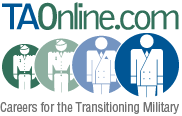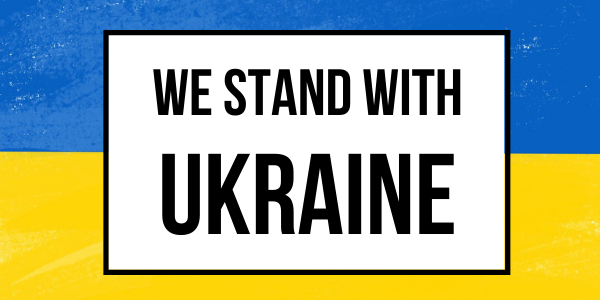Title:What is an Interview?
Author:© Tom Wolfe, author; all rights reserved; excerpts from Out of Uniform: Your Guide to a Successful Military-to-Civilian Career Transition; used with the permission of the author and publisher, potomacbooksinc.com.
Date:September 2014
Source:potomacbooksinc.com
An interview is a critical component of every job search and it usually takes a series of successful ones to generate an offer. Simply stated, an interview is a two party interaction during which each side investigates the other to find compatibility. The potential employer evaluates the candidate's qualifications, potential, interest level, and requirements. The candidate in turn determines the organization's ability to satisfy his or her needs.
Most interviews are done face-to-face and occur only after a certain amount of filtering. This pre-interview filtering is important for several reasons. Since a personal interview is time consuming and costly for both parties, it makes sense to schedule it only after the obvious mismatches have been eliminated. This filtering process not only saves time and money but also increases the odds of an offer and an acceptance.
This mutual evaluation process has both objective and subjective elements, however most of the objective evaluation is completed before the interview occurs. An interviewer does not need to meet you to see if you are properly trained or educated for the job. A quick review of your resume will provide that information. Likewise, you do not need to sit down with the interviewer to figure out if the location and the money meet your needs. Although most of this objective screening occurs in advance, it will continue to some degree during the interview. Remember that even if the entire interview feels like objective evaluation, subjectivity determines the outcome.
Subjectivity has its roots in personality and fit: interpersonal skills, presentation, image, communication, chemistry, attitude, friendliness, style, mannerisms, and expression of interest. None of those traits come into play before the interview but most are revealed when face time begins and that face time comes in many forms. Here are the most common ones, a few variations, and a brief discussion of each.
- Information Interview. The goal here is information, not employment. This is an excellent way to learn about a job, a company, an industry, or a career path before deciding whether or not to pursue it as part of your search. Asking friends, associates, family members, and others for help is a good way to generate an information interview. Prepare well and do your best—even though this is not an employment interview, it might lead to one someday.
- Initial (or first level or screening). This is typically the first thing that happens after a résumé generates interest. It is usually conducted over the phone or in a neutral setting (e.g., hotel lobby, coffee shop, base education office, or family services center). Another common location for initial interviews is a job fair, where hundreds of short initial interviews occur throughout the day.
- Follow-up (or second level or site visit or call back). This is your reward for a successful initial interview. It usually occurs at a mutually convenient time and takes place at the potential job site. It can last from several hours to two days. In most cases the company covers all of the associated travel expenses. There is usually a slate of interviews with several people. These people may include your boss-to-be, coworkers, a human resource representative, and subordinates. A tour of the facility and/or the local area is often on the agenda. In most cases the decision to extend an offer is made as a result of the information obtained from the interviews conducted during that visit.
- Social Interview. This variety is designed to see how you handle yourself in a public or social setting. There is often a meal component and sometimes there is a cocktail reception in the mix. It may be just you and your new boss or a coworker or there could be several additional people involved.
- Negative Interview. This is a technique rather than a category of interview but it deserves your attention. It is designed to be confrontational and high-stress. The interviewer tries to get you to eliminate yourself. There are three distinct varieties, to which I dedicate an entire chapter of my book. How to handle it? Short answer — do not take the bait and keep smiling!
- Group Interview. This version consists of multiple candidates being interviewed or observed at the same time. Not only are you and your competition being evaluated but you are also checking each other out. Sometimes the group interview is combined with the social interview, which gives the employer the opportunity to see how you interact with peers and competitors.
- Panel Interview. Here we have one candidate in front of multiple interviewers at the same time. This tends to be a high stress, rapid fire, and taxing event. The panel measures the candidate's ability to handle pressure and think on his or her feet. The members pay particular attention to the candidate's aptitude in involving and engaging the entire panel, not just the member who happens to have the floor.
- Day-in-the-field (or ride-along). Although the interview process is typically complete after the follow-up, some companies add another step. The interviews may have been held at an office, but the actual job requires a significant amount of time away from that office. If this requirement is inherent in the job, then it is important for the candidate to also experience that aspect of the job. One way to accomplish that is to have the candidate spend a day in the field with someone who is doing the job. A well-informed candidate is more likely to make the right decision. Interviews for jobs such as sales, field engineer, consultant, and technical rep are likely to include this step.
- Client Approval. If you are interviewing with a contractor or consulting firm and the position requires you to spend most of your time with a specific client, you may need to be approved by that client before you can be hired. This means an extra round of interviews at the client site.
- Testing/Evaluation/Case Studies. Many companies will set aside a portion of a site visit or a separate day for formal testing or evaluation. The purpose is to measure aptitude or intelligence as it applies to the job. Although not an interview per se, it is helpful in determining the potential for a solid fit. If the purpose of the test is knowledge-based then you should be forewarned and can study accordingly, however there is little you can do in the way of preparation for aptitude testing.
- Profiling. Some companies collect historical personal performance data to build a profile of what constitutes a successful employee and what jobs are most likely to utilize the talents of a particular candidate profile. These companies will hire a behavioral analysis company to do a profiling session with you before an offer is extended. This usually takes the form of a question and response survey, either online or via telephone.
Here's one more thing to keep in mind. Regardless of the form or the variety, the interviewer wants answers to these questions: Is this the kind of person we want on our team? Can we make and keep this person happy, now and in the future? Similarly, the candidate needs to know: Are these my kind of people? Is this an organization where I can be productive and happy, both short- and long-term? Positive responses to those questions lead to an offer, an acceptance, and a career.
For a more thorough discussion of this and other military-to-civilian career transition topics, read my book, Out of Uniform (www.out-of-uniform.com).

